Music spreads through manuscripts
The music collection of the Abbey of Montecassino was established, as a result of successive donations, from the end of the 18th century through the 20th century. Part of this rich collection is a group of 72 choirbooks, dating from the 15th to the 19th century.
Music at Montecassino in the Middle Ages
The religious sense that pervades Montecassino is deeply imbued with sound.
The liturgical chanting of the monks marks the rhythm of each day and spreads regularly with the sun and into the night.
It is a harmony that fades away as soon as it has been sung, but it retains a trace in the musical notation.

The Middle Ages is the time when the first forms of writing music were born and developed throughout Europe.
There were various ways of writing music: for example, through the letters of the Latin alphabet, which represented the relative pitch of sounds and which, for example, could be written with the color red…
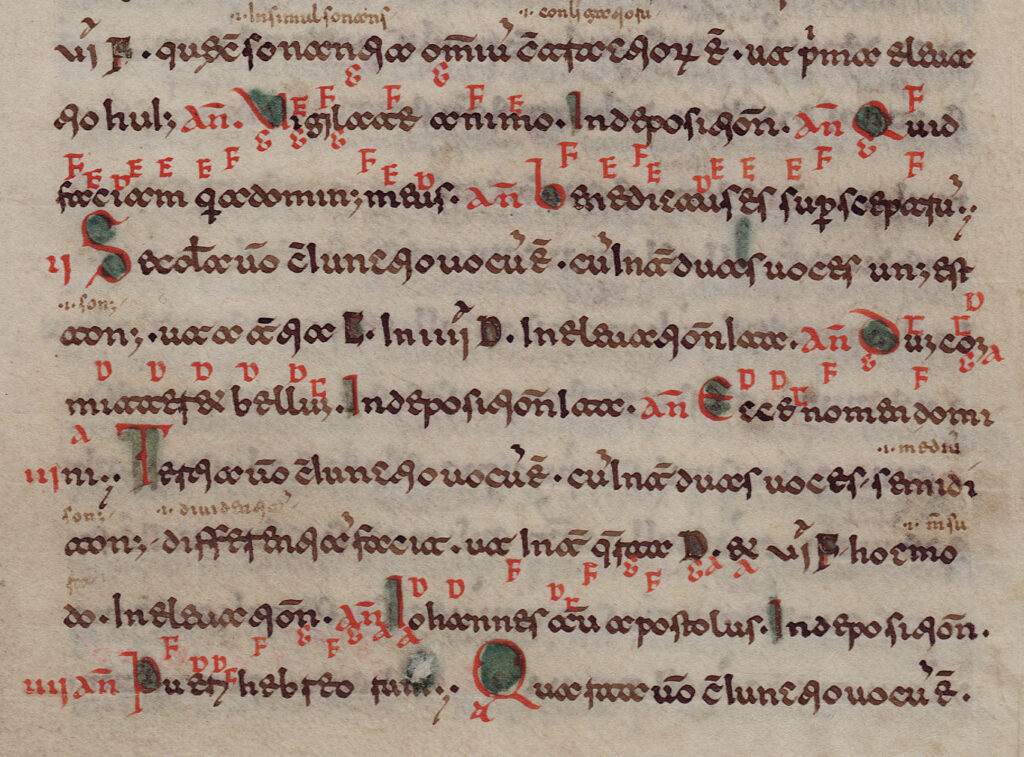
… or through a system of letters and syllables that were placed on top of the text to be sung, within a pattern of dry and ink lines.
Some of these syllables are the same that we use currently for indicating the notes of the musical scale.
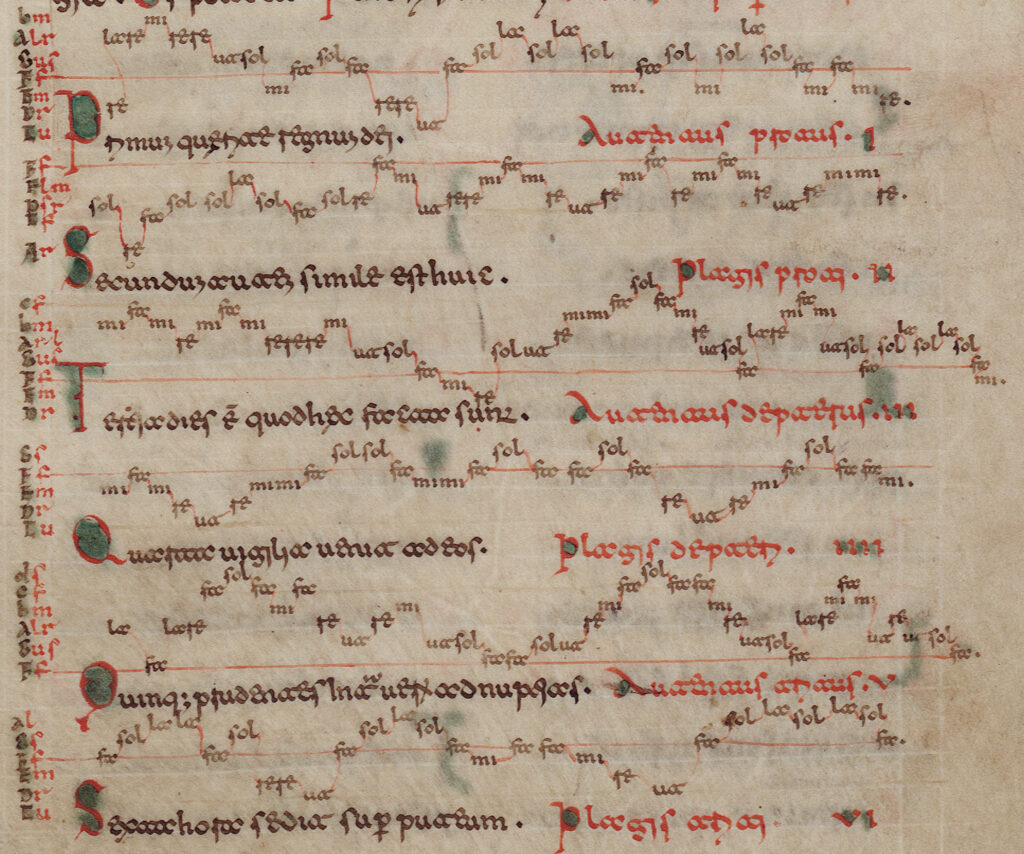
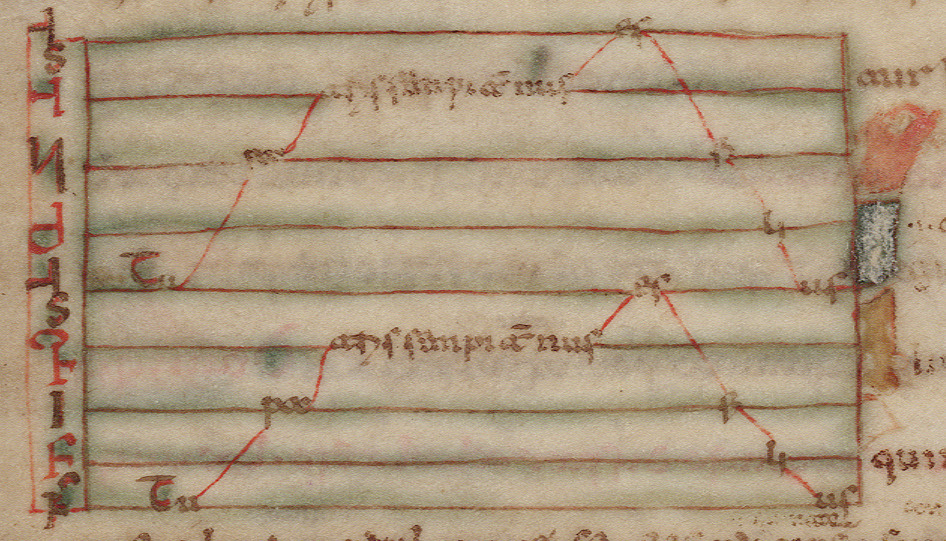
But sounds could also be written by means of a graphic scheme involving the placement of the text at different pitches within a system of lines, in relation to the highest or lowest sounds to be sung.
The type of notation widespread included some particular signs that are called neumes and that were placed above the text at different positions, according to the progress of the melody.
There are many types of neumes that developed throughout Europe in the Middle Ages.
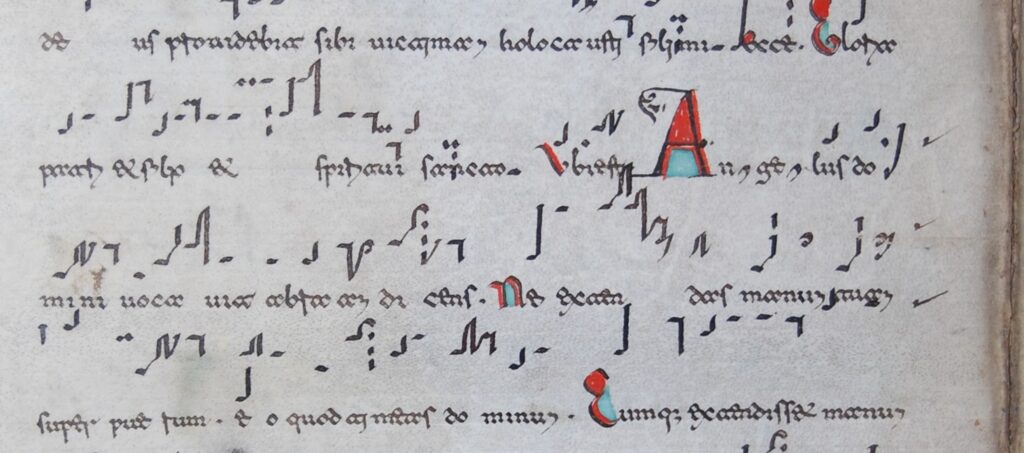
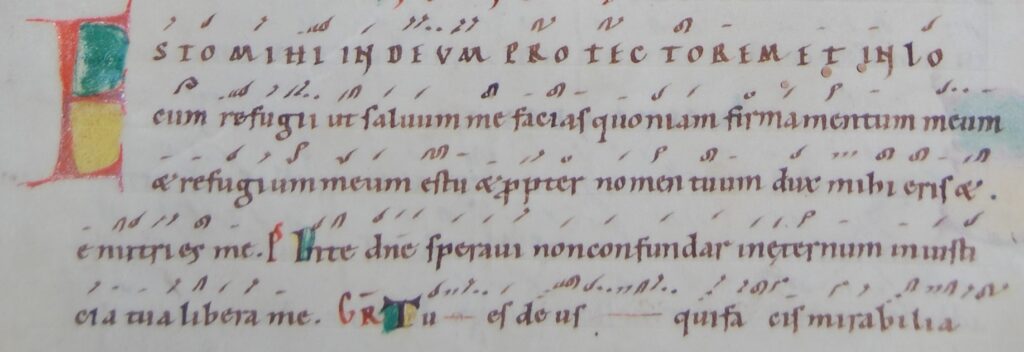
Over the years the ancient neumes were changed, giving rise a few centuries later to the so-called square notation and then to our common notation.
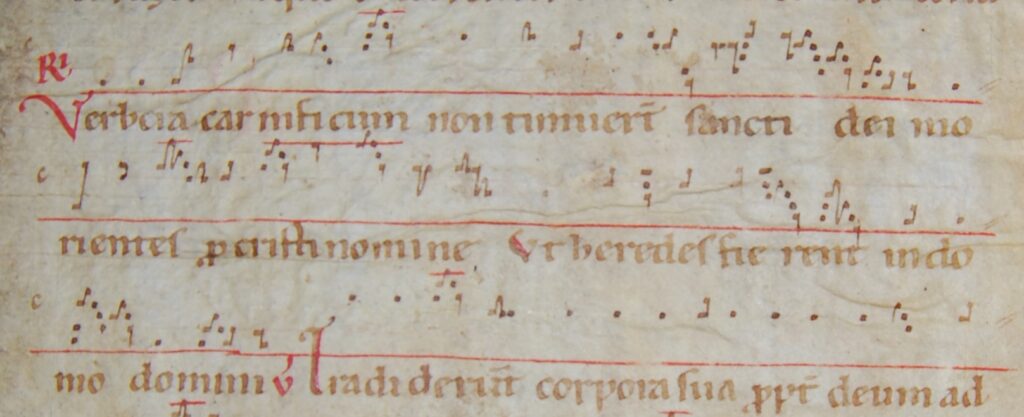
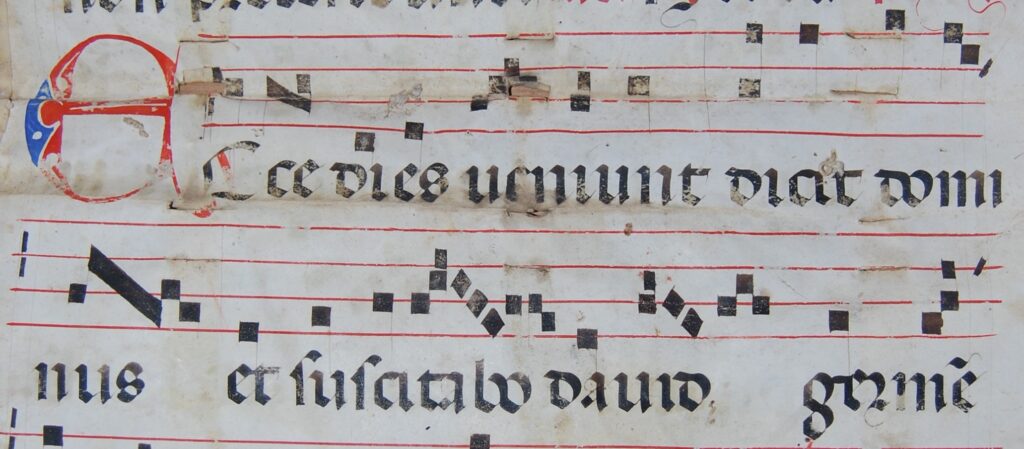
State Library of the Montecassino National Monument, Archives, Cod. 318
Among the most famous manuscripts, Cod. 318 is worth mentioning: a collection of works by ancient and medieval authors relating to thears musica, including the Micrologus of Guido d’Arezzo. The manuscript was written in Beneventan script by a single copyist, unfortunately anonymous, who finished his work after the year 1070. Famous is the depiction of the Guidonian hand visible on p. 291 of the manuscript.
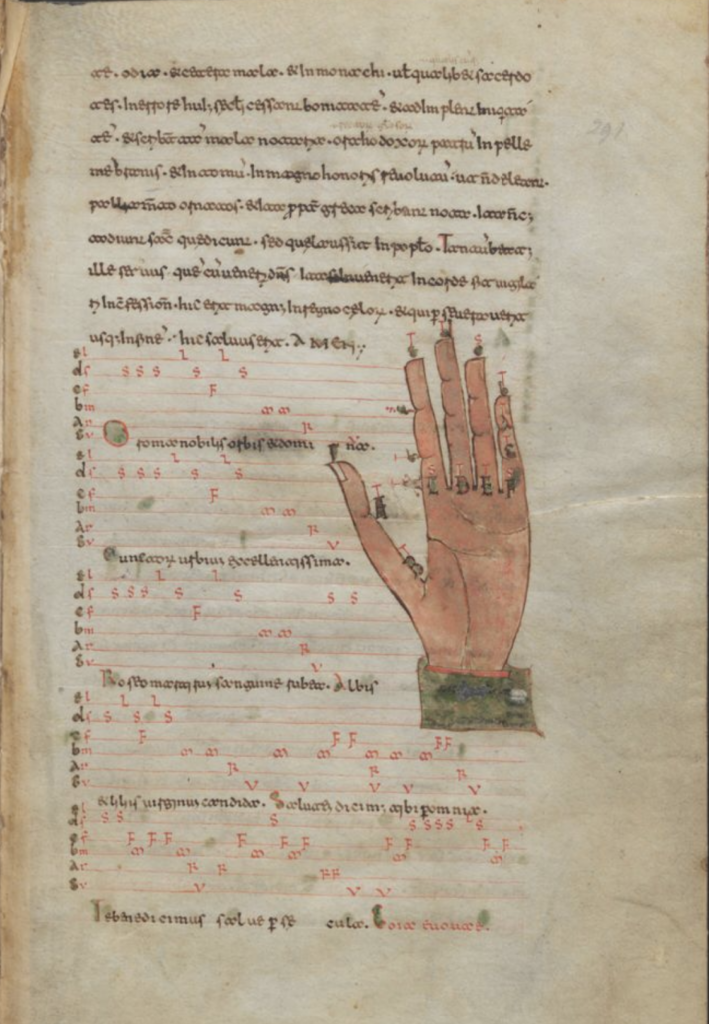
Thanks to the MeMo project, it is now possible to access the full reproduction of the code.

